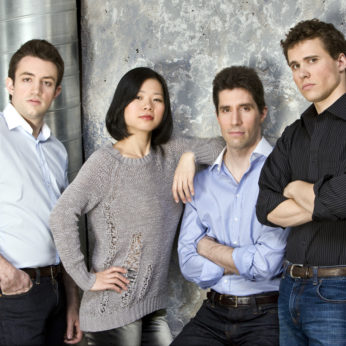Zemlinsky was a key figure in the seismic musical upheavals of twentieth-century Vienna. He was old enough to have studied with Brahms, surviving his first session with the grumpy old master, which ended with Brahms roaring at him that he should give up composing. But once he passed this test, Brahms gave him a monthly stipend and even arranged a publisher for him. His First Quartet and Clarinet Trio were written while he was under the spell of Brahms.
At this time, in the dying years of the old century, Zemlinsky was also Schönberg’s teacher and helped to arrange performances of his early works. Their relationship was a chequered one as Schönberg married Zemlinsky’s sister Matthilde, who was the inspiration for Verklärte Nacht. When their marriage foundered and Matthilde was caught in the arms of her lover, the painter Richard Gerstl, Schönberg never forgave her, and even blamed Zemlinsky for supporting his sister. The result was tragedy as Gerstl hanged himself and Matthilde died before her time. Schönberg’s Second Quartet reflects these tragic events.
Zemlinsky was also close to Mahler and was passionately in love with Alma Schindler before she rejected him to marry the older, but more famous, composer. She has left an unedited picture of Zemlinsky: He was a repulsive gnome, small, chinless, toothless, always smelling of the coffee house, unwashed, but, because of his intellectual sharpness and strength, enormously fascinating. He was for a time her composition teacher, the classes being divided between kissing and composing.
Webern and Berg were also friends of Zemlinsky, but when the rift with Schönberg over Matthilde opened, later exacerbated by their different approaches to modernism, only Berg remained as a close friend. Berg’s famous Lyric Suite not only quotes from Zemlinsky’s Lyric Symphony but is also dedicated to him. When Berg died suddenly of septicaemia in 1935, Zemlinsky was devastated. It was already a bad time for him as the Nazis had driven him out of Germany, and the campaign against entartete Kunst (degenerate art, a euphemism for Jewish art) had cost him his publisher. He was in the middle of composing his opera Der König Kandaules, but interrupted his work to write this quartet as a memorial to his friend. It took him three months to complete and, being without a publisher, he even had to write out the parts himself. The Kolisch Quartet gave a private performance, but the first public performance was not for another thirty years. The score did not appear in print until 1974.
Zemlinsky took the Lyric Suite as his model and cast the work in six movements grouped in thematically linked pairs. The work opens with a hushed chorale and a number of themes associated with loss and mourning from his other works, including the AHDE signature he had used for his sister Matthilde. The burlesque revisits some of these themes at high speed. The adagietto is calm and meditative, recalling the Prelude to Act III of Parsifal, while the intermezzo transforms its long melodic line into a rhythmic dance movement. The wonderfully expressive barcarole theme is given to the solo cello before it is taken up by the other instruments. The variations present the theme in a series of different scorings and accompaniments rather than varying the theme in the traditional manner. This leads directly to the ferocious double-fugue of the finale, which begins explosively and gets progressively wilder.
